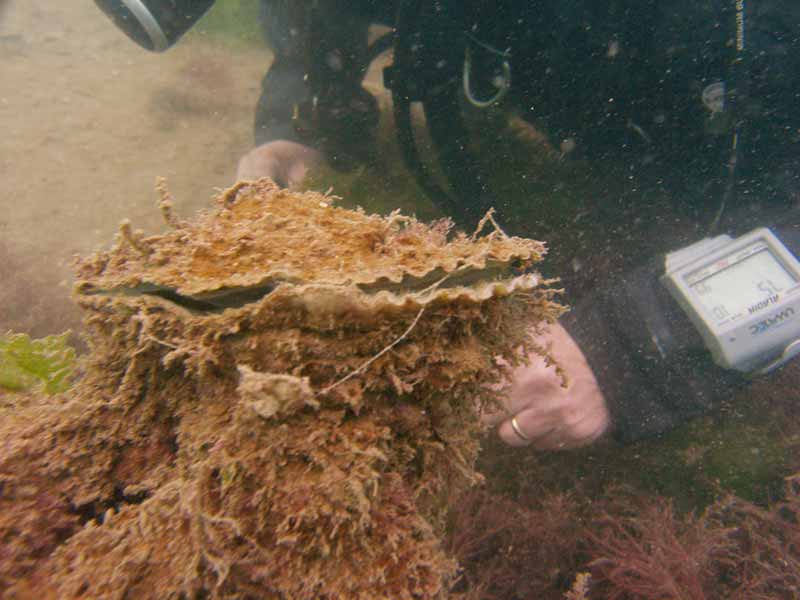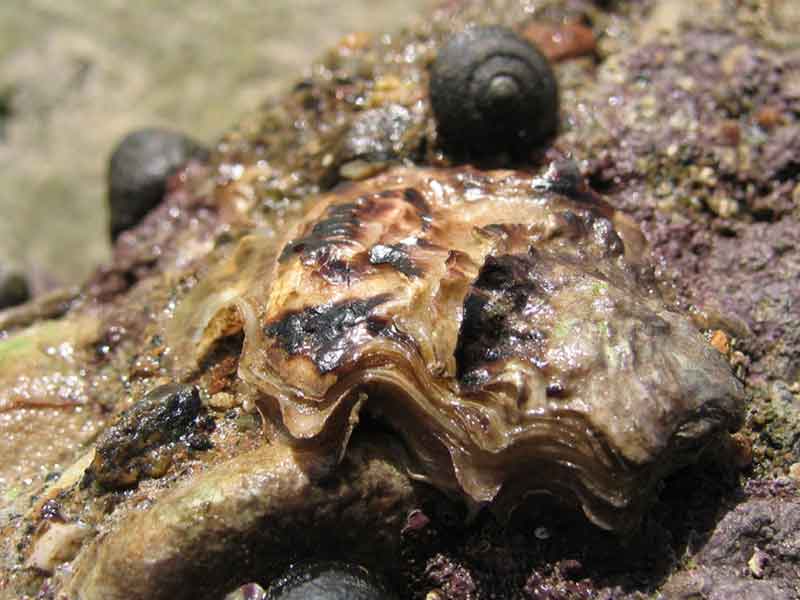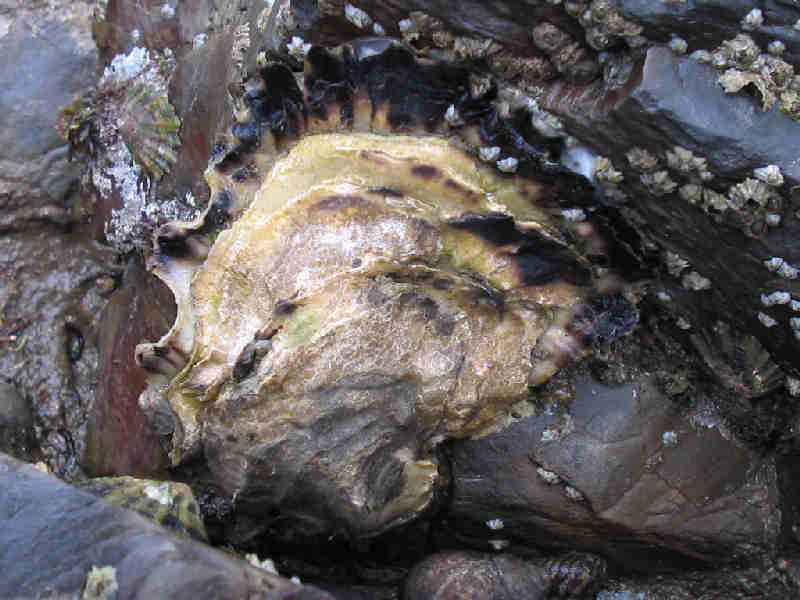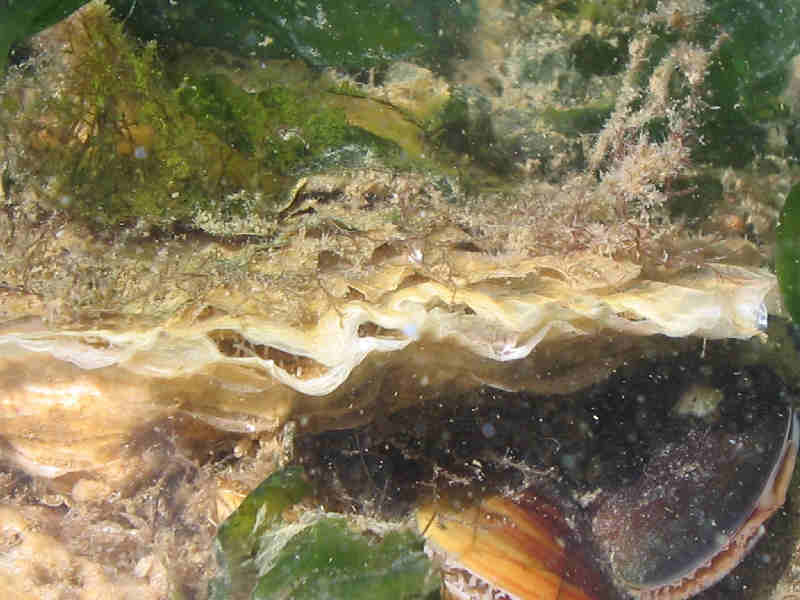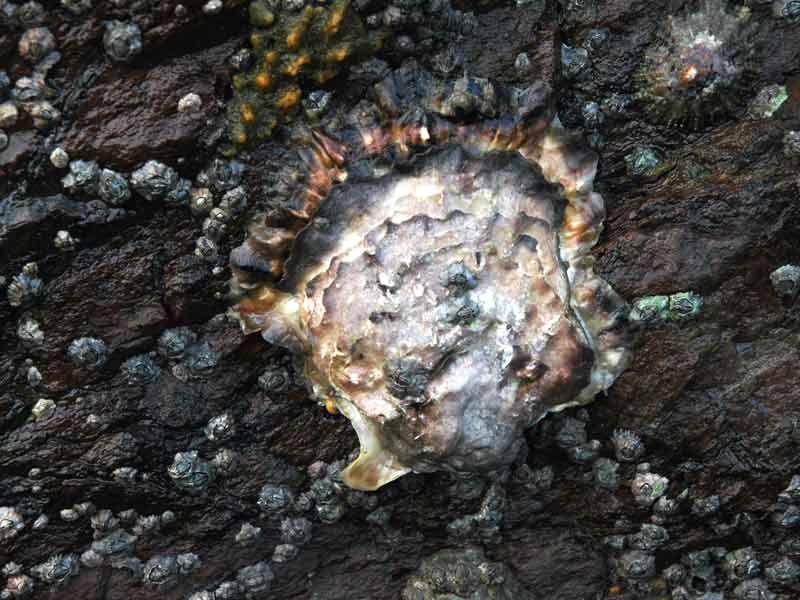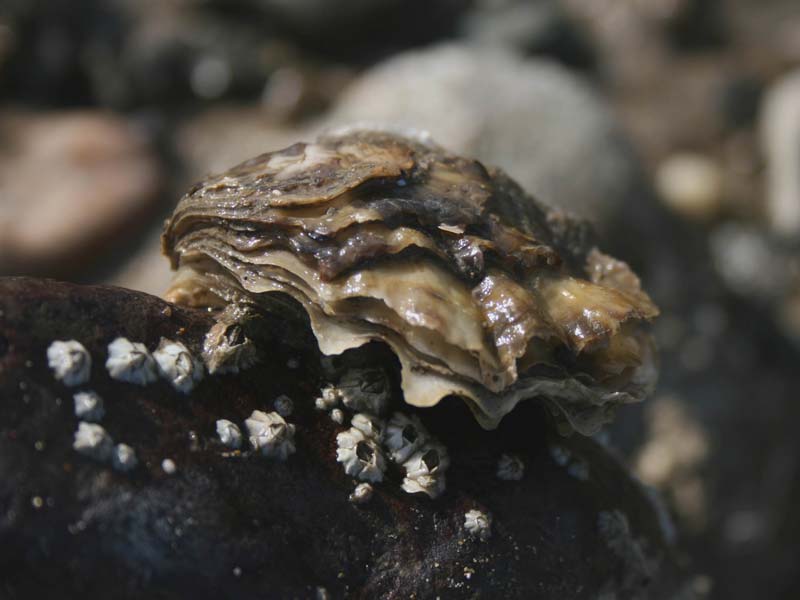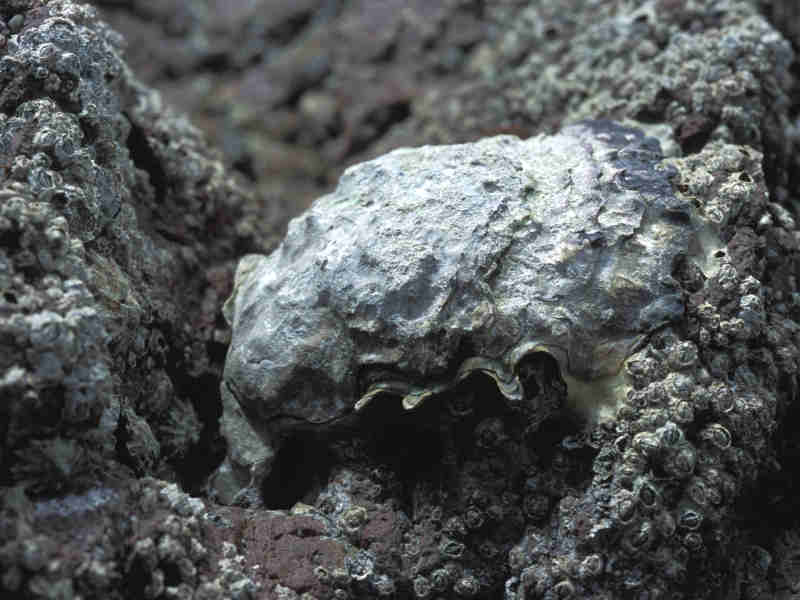Pacific oyster (Magallana gigas)
Distribution data supplied by the Ocean Biodiversity Information System (OBIS). To interrogate UK data visit the NBN Atlas.Map Help
| Researched by | Joelene Hughes | Refereed by | Admin |
| Authority | (Thunberg, 1793) | ||
| Other common names | - | Synonyms | Crassostrea angulata (Lamarck, 1819), Crassostrea gigas (Thunberg, 1793) |
Summary
Description
The shell can grow up 18 cm long. An off-white to yellow or bluish grey in colour, the shell often has deep purple patches. The left valve is deeply cupped with 6 or 7 bold ribs making the shell margin rough. The right valve is flat or slightly convex and has ribs corresponding to channels of left valve.
Recorded distribution in Britain and Ireland
Introduced initially in Cornwall, Essex and Wales for mariculture. It has been farmed on around 300 sites throughout England, Scotland, Wales and Northern Ireland. 'Escapees' have established populations in various regions.
Global distribution
Present throughout Europe from Norway to Spain and Portugal on the Atlantic Coast. Present in the USA and south west Canada. It occurs naturally in Japan and south eastern Asia.
Habitat
Found on the lower shore and shallow sublittoral to a depth of around 40 m.
Depth range
-Identifying features
- An elongate oval shell with a crenulate shell margin.
- The left valve is deeply cupped with a coarse concentric sculpture and has 6 or 7 prominent ribs.
- The flat or slightly convex right valve sits inside the left valve.
- The troughs of the right valve correspond to the ridges on the left valve.
- The shell often overgrows the beaks and umbones.
- The external colour may be off-white to brown with patches or streaks of purple.
- Internally the shell is white with the adductor scar typically purple (mauve).
Additional information
Similar to Crassostrea virginica although this species lacks the crenulate shell margin and bold ribs of Magallana gigas. Magallana gigas was introduced from Portugal to Essex in 1926 as a commercial crop and has since established itself in the wild. It occurs naturally in Japan and south-east Asia. Magallana gigas is also known as the Portuguese or Japanese oyster.
Listed by
- none -
Bibliography
Edwards, E., 1997. Molluscan fisheries in Britain. In The History, Present Condition, and Future of the Molluscan Fisheries of North and Central American and Europe, vol. 3, Europe, (ed. C.L. MacKenzie, Jr., V.G. Burrell, Jr., Rosenfield, A. & W.L. Hobart). National Oceanic and Atmospheric Administration, NOAA Technical Report NMFS 129.
Eno, N.C., Clark, R.A. & Sanderson, W.G. (ed.) 1997. Non-native marine species in British waters: a review and directory. Peterborough: Joint Nature Conservation Committee.
Hayward, P., Nelson-Smith, T. & Shields, C. 1996. Collins pocket guide. Sea shore of Britain and northern Europe. London: HarperCollins.
Hayward, P.J. & Ryland, J.S. (ed.) 1995b. Handbook of the marine fauna of North-West Europe. Oxford: Oxford University Press.
Howson, C.M. & Picton, B.E., 1997. The species directory of the marine fauna and flora of the British Isles and surrounding seas. Belfast: Ulster Museum. [Ulster Museum publication, no. 276.]
Pauley, G.B., B. van der Raay, and D Troutt 1988. Species profiles: life histories and environmental requirements of coastal fishes and invertebrates. (Pacific Northwest) - - Pacific oyster. [online] http://www.nwrc.gov/publications/specintro.htm, 2002-01-30
Poppe, G.T. & Goto, Y., 2000. European Seashells. Vol. II. (Scaphopoda, Bivalvia, Cephalopoda). 2nd edition. ConchBooks, Hackenheim, Germany, 221 pp.
Seaward, D.R., 1982. Sea area atlas of the marine molluscs of Britain and Ireland. Peterborough: Nature Conservancy Council.
Seaward, D.R., 1990. Distribution of marine molluscs of north west Europe. Peterborough: Nature Conservancy Council.
Tebble, N., 1976. British Bivalve Seashells. A Handbook for Identification, 2nd ed. Edinburgh: British Museum (Natural History), Her Majesty's Stationary Office.
Datasets
NBN (National Biodiversity Network) Atlas. Available from: https://www.nbnatlas.org.
OBIS (Ocean Biodiversity Information System), 2025. Global map of species distribution using gridded data. Available from: Ocean Biogeographic Information System. www.iobis.org. Accessed: 2025-08-02
Citation
This review can be cited as:
Last Updated: 08/05/2008


